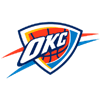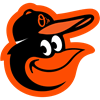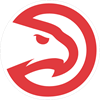After spending the last six weeks watching film and crafting takes on this year's rookie class, we've made it to draft week. As a fantasy football analyst, I spend most of my time on the skill positions. When developing my notes, I project which specific role each player will best fit when entering the NFL. Looking at players through that lens helps me create projections once they find a home. The following are players I seem to view differently than the mainstream. Here are my findings.
Quarterback
In a quarterback-driven league, many mock drafts project Hendon Hooker to be drafted in the first round. A few weeks ago, I thought he would be a second- or third-round pick. Last year, we saw QBs fall much later than anticipated.
Pros:
- Very good at leading receivers with well-placed passes
- Climbs the pocket well when it collapses
- Very good runner in the open field — defenses will need to account for him
- Physical tools are more than adequate for the NFL
Cons:
- Struggles to layer the ball on intermediate passes against zone defenses
- When leaving the pocket, often fails to look for passing opportunities
- Only had to make half-field reads in college; unsure if he can read the entire field
- 25-year-old rookie
- Coming off an ACL injury
The Bottom Line:
Although he has the needed physical tools, the concerns are problematic. Teams play a lot of zone defense. Also, quarterbacks need to have the threat to pass when breaking the pocket.
After spending the last six weeks watching film and crafting takes on this year's rookie class, we've made it to draft week. As a fantasy football analyst, I spend most of my time on the skill positions. When developing my notes, I project which specific role each player will best fit when entering the NFL. Looking at players through that lens helps me create projections once they find a home. The following are players I seem to view differently than the mainstream. Here are my findings.
Quarterback
In a quarterback-driven league, many mock drafts project Hendon Hooker to be drafted in the first round. A few weeks ago, I thought he would be a second- or third-round pick. Last year, we saw QBs fall much later than anticipated.
Pros:
- Very good at leading receivers with well-placed passes
- Climbs the pocket well when it collapses
- Very good runner in the open field — defenses will need to account for him
- Physical tools are more than adequate for the NFL
Cons:
- Struggles to layer the ball on intermediate passes against zone defenses
- When leaving the pocket, often fails to look for passing opportunities
- Only had to make half-field reads in college; unsure if he can read the entire field
- 25-year-old rookie
- Coming off an ACL injury
The Bottom Line:
Although he has the needed physical tools, the concerns are problematic. Teams play a lot of zone defense. Also, quarterbacks need to have the threat to pass when breaking the pocket. I foresee Hooker being a low-end starter or high-end backup.
Running Back
Brown had an excellent final season at Illinois. He had a major workload and didn't show signs of wearing down. He'll could be a Day 3 pick. Will he be a career backup, or does he have a chance to make a difference?
Pros:
- Very good at changing directions, can stick his foot in the ground and explode downhill
- Can run away from defenders in the open field
- Showed ability to run between the tackles
- Sets up his blocks well before navigating traffic
- Excellent receiver, can run actual routes, not just swing passes and dump-offs
- 93rd-percentile explosiveness and 84th-percentile speed based on Combine testing
Cons:
- Significant ball-security issues
- Often fails to vary his speed on rushing attempts
- Not always strong through contact
- Needs to improve in pass protection
The Bottom Line:
I'm high on Brown's future. He showed he can handle volume. In addition, his receiving skills will translate very well. His vision helps him navigate traffic well. Most of his flaws are things he can work on. At the very least, he'll be a good receiving back. But there's also a world in which he's a three-down back seeing 15-18 touches per game and being a steal of the draft.
In the lead-up to the draft, Johnson has gotten increased buzz. Some analysts believe he'll be drafted in the second round as one of the top RBs off the board. Although he was a backup in college, he was behind Bijan Robinson, so there's no shame in that. Is the excitement around him warranted?
Pros:
- Excellent at forcing missed tackles
- Power back who can break tackles as well
- Maintains balance after taking on contact
- Good in pass protection
- Excellent size (6-foot, 219)
Cons:
- Often loses speed when changing direction
- Lacks sharp cuts, rounds them off too frequently
- Often looked to take running plays outside — that may not work in the NFL
- Tested in the 48th percentile in explosiveness drills at the Combine
The Bottom Line:
Johnson has some very good qualities. However, his negative traits are ones that likely will cause him to struggle with consistency at the next level. He's not a special athlete in any particular area, and he may have just taken advantage of his size while in college. It's possible that he's simply a depth running back in the NFL who sees 5-8 touches per game.
Wide Receiver
Perry is one of the few big-bodied receivers who could go in the first 100 picks in the draft. He's clearly viewed as being well outside the top WR group in this draft. Is it possible that he becomes a player that teams later regret passing up?
Pros:
- Excellent footwork that allows him to beat cornerbacks off the line
- Changes direction very well when running routes
- Varies his pace when coming off the line, making him tough for defenders to predict
- 6-3, 198, with an excellent catch radius
- Can break tackles with power or agility
- Tested in the 73rd percentile in explosiveness drills at the Combine
Cons:
- Can be slow when coming out of his breaks
- Doesn't always adjust to the ball when it's in the air — this has led to drops
- He didn't always play fast and physical in college
The Bottom Line:
The skills he demonstrated in college will give his NFL coaches a lot to work with. His size could give him versatility. He could play on the line to take on press coverage or off the line to run both downfield and possession routes. He may be a player who realizes his ceiling in the NFL.
Higgins is one of the biggest WRs in this year's class at 6-3, 225. He didn't need that size to be successful in college, so he often played too small (played with too much finesse). His size and skill set likely will excite some of the coaches in the NFL. If a team can find the right role for him, he could be a unique player who becomes a star.
Pros:
Despite his size, he had an 86th-percentile 40 time while testing in the 86th percentile in explosiveness.
- 50th-percentile agility score
- Has the strength to overpower defenders
- Runs crisp routes and knows when to break routes off
- Makes defenders miss after the catch
- Gets separation from defenders quickly
- Has the speed to stretch the seam
- Solid blocker
Cons:
- Not a threat to attack the defense vertically
- May not have the skillset to win consistently on the outside
The Bottom Line:
If he's used as a power slot WR or even moved to a slot tight end role, he could become a matchup nightmare for defenses. With much of the defense in the league being zone, Higgins is exactly the type of player who can give coaches an advantage. It might not happen overnight, but if he lands in the right spot, he may be a player we're talking about for years.





































